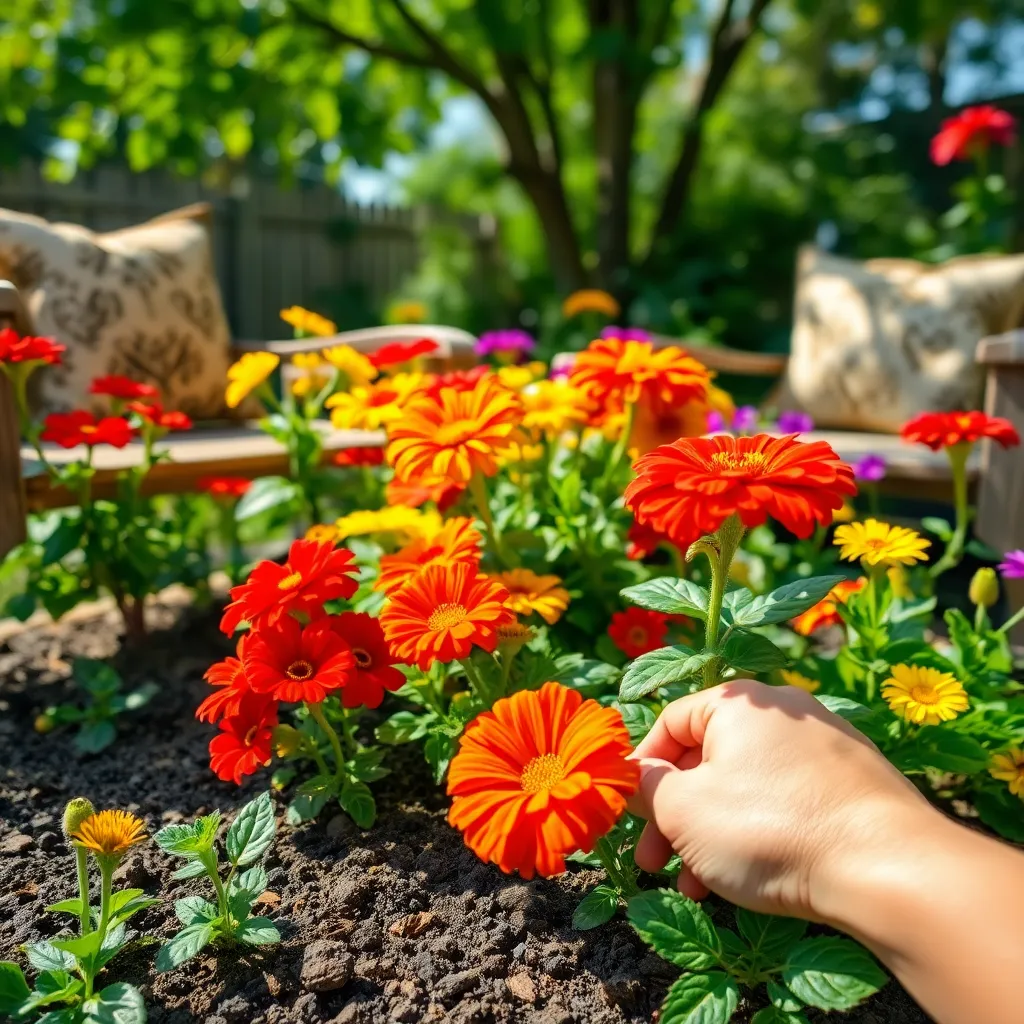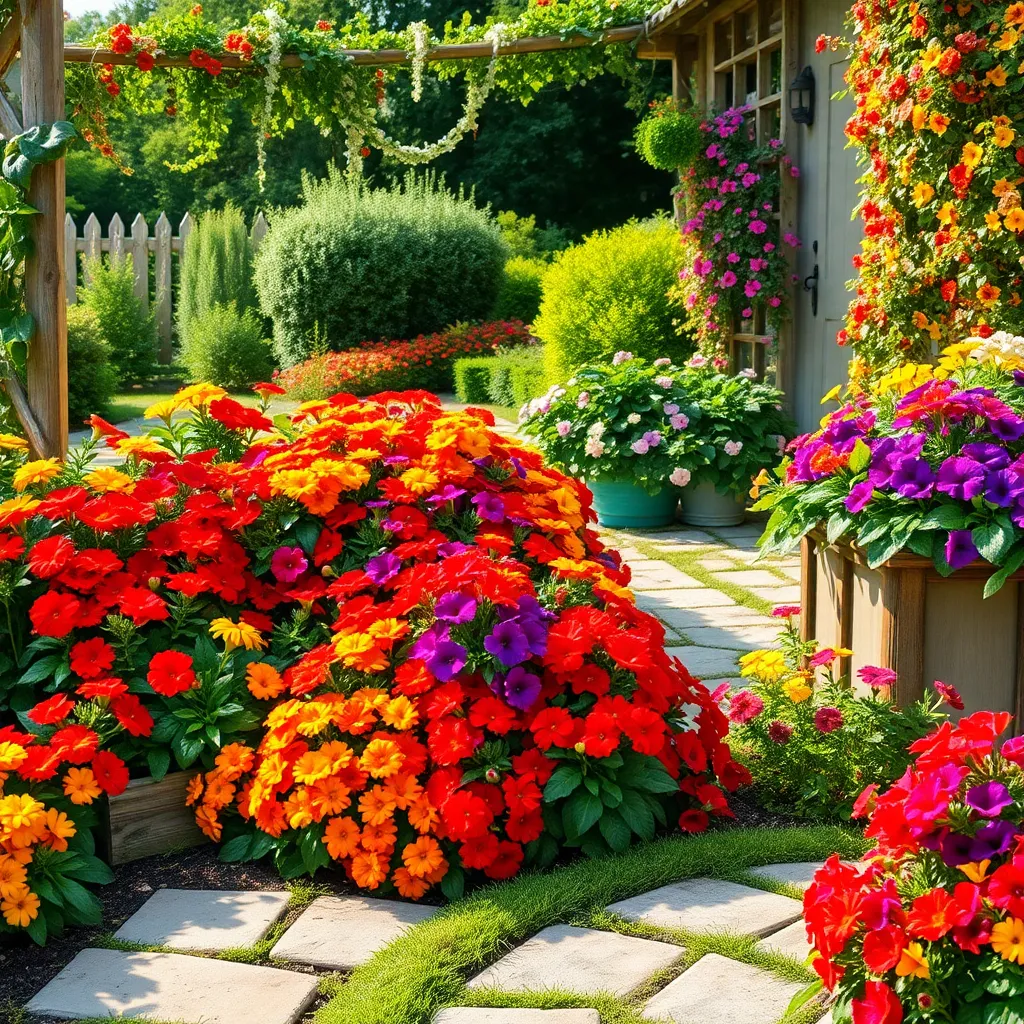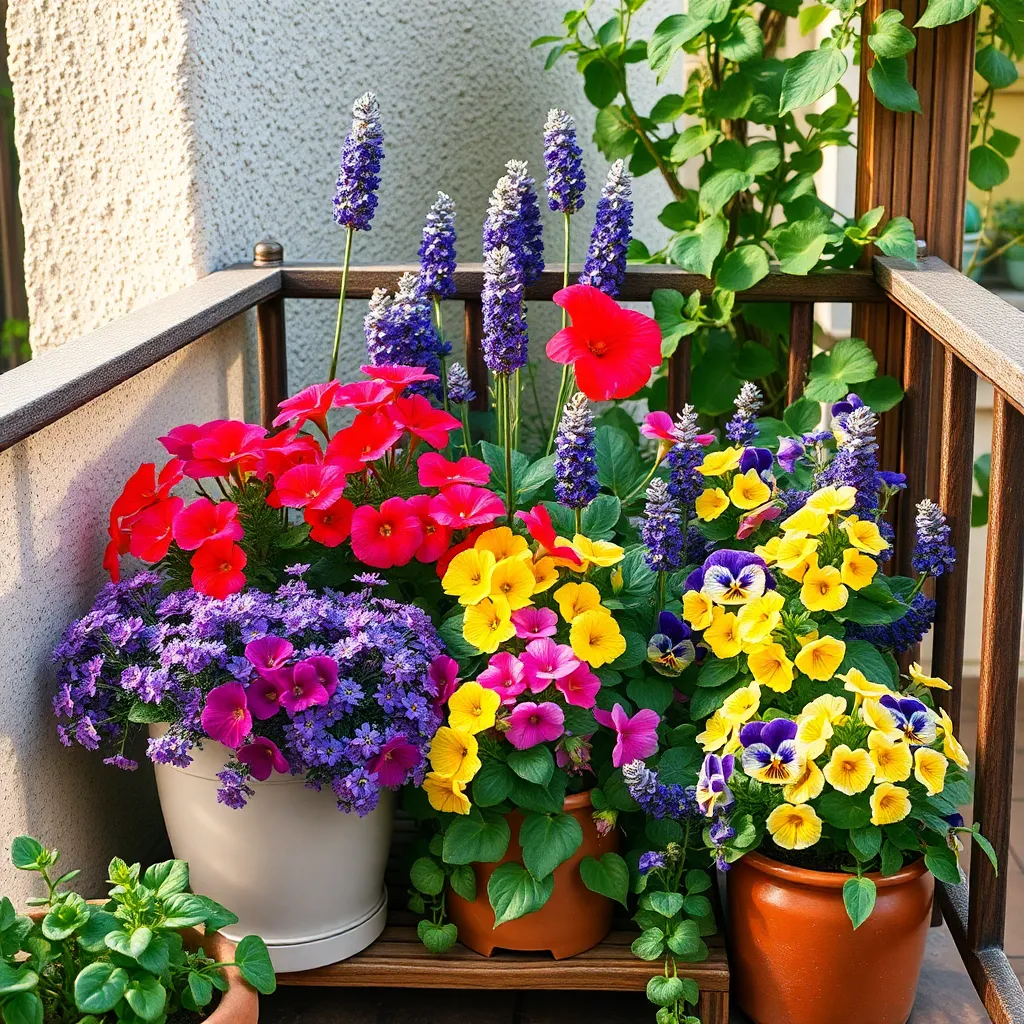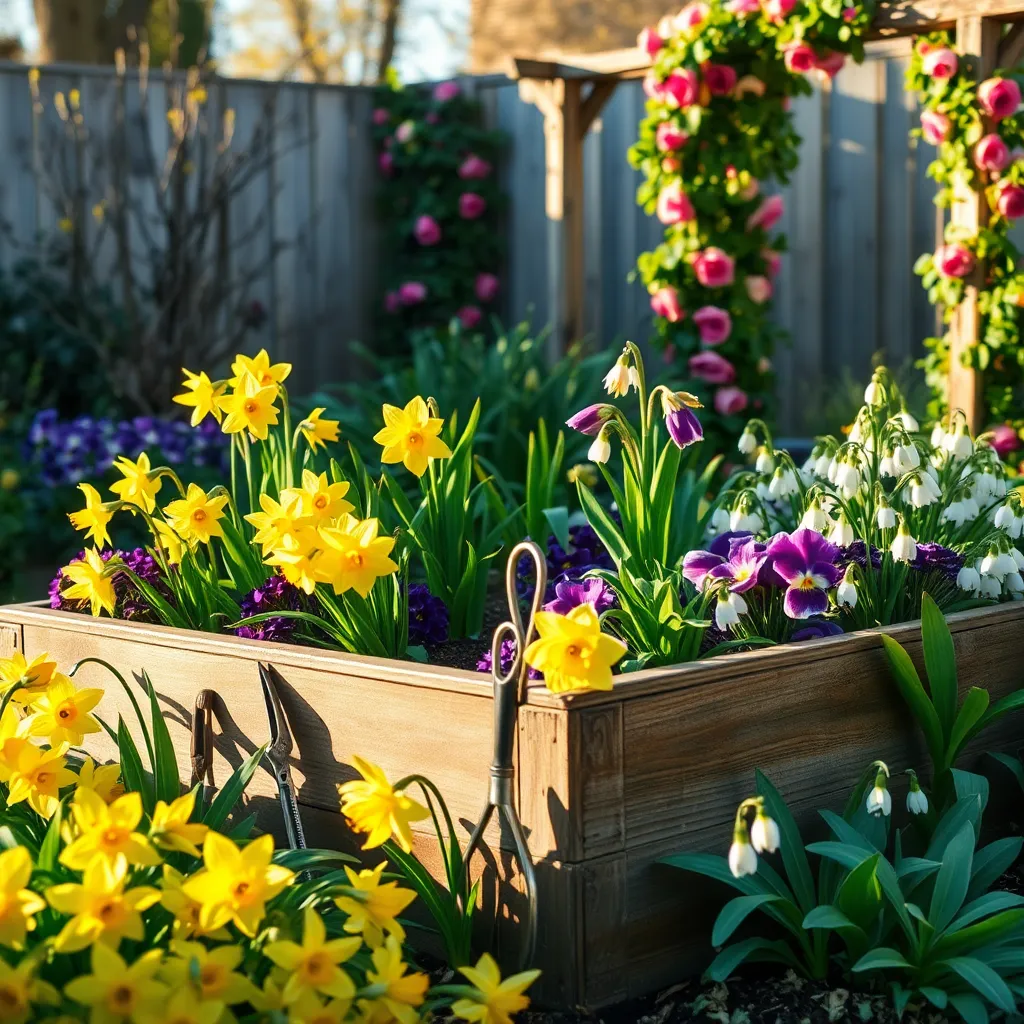Gardening, even in the smallest of spaces, holds the promise of vibrant beauty and personal sanctuary. For both budding gardeners and seasoned green thumbs, cultivating a small garden filled with colorful flowers is a deeply rewarding endeavor that transforms even the tiniest patch of land into a lively, uplifting oasis. The magic of a small garden lies in its ability to surprise and delight with every bloom, offering a canvas where creativity and nature meet.
In this article, you’ll discover an array of stunning flowers perfect for compact gardens, each chosen for its hue, resilience, and ability to thrive in limited space. From radiant annuals that provide a burst of color to perennials that return year after year, we’ll guide you through selections that promise to bring joy and vibrancy to your small garden. Whether you’re just starting out or have years of gardening experience, you’ll find practical tips and inspiring ideas to help your miniature garden blossom.
Harnessing the power of color in your garden is about more than just aesthetics—it’s about creating a space that reflects your personality and brings daily joy. We’ll explore how to strategically plant flowers to maximize impact, ensure continuous blooms, and make the most of every inch of soil. As you read on, prepare to be inspired by the possibilities that await your small garden, where every flower has the potential to shine and every gardener can find their unique expression.
Choosing Vibrant Flower Varieties

When selecting vibrant flower varieties for a small garden, consider blooms that offer not only beauty but also resilience. Look for plants that thrive in your climate zone and require less maintenance, ensuring they flourish throughout the growing season.
Sunlight is a crucial factor in plant health, so assess how much direct sunlight your garden receives. Choose flowers like zinnias or marigolds, which are not only colorful but also tolerant of full sun, making them ideal for sunny spots.
For gardens with partial shade, opt for impatiens or begonias, as they thrive in less direct light and still provide a splash of color. These varieties are known for their lush, vibrant blooms and can brighten up shadier areas beautifully.
Consider soil type and watering needs to ensure your flowers’ success. If your soil is sandy, incorporate organic matter like compost to improve water retention, and water deeply but infrequently to encourage deep root growth.
Maximizing Color in Limited Space

In small garden spaces, using vertical gardening techniques can significantly enhance the color palette. Consider installing trellises or vertical planters to grow flowering vines like clematis or sweet peas, which provide a vibrant splash of color at eye level.
Maximize your space by choosing compact or dwarf varieties of colorful plants that thrive in containers. Plants like dwarf zinnias or marigolds are excellent choices as they offer continuous blooms while requiring minimal space.
To create a dynamic visual impact, employ the technique of layering plants with different blooming times. This ensures that your garden bursts with color throughout the seasons, keeping it lively and engaging from spring through fall.
Optimize sunlight exposure by strategically placing taller plants like sunflowers at the back and shorter ones like petunias at the front. This arrangement not only maximizes sunlight but also adds depth and dimension to your garden space.
Compact Blooms for Small Gardens

Small gardens can be just as vibrant and lively as larger spaces with the right selection of compact blooms. To make the most of limited space, choose plants that offer continuous flowering throughout the growing season.
Consider using plants like dwarf zinnias, which provide a burst of color with minimal space requirements. These hardy annuals thrive in well-drained soil and require full sun to produce their best blooms.
An excellent choice for small gardens is the compact variety of lavender, known as ‘Munstead.’ This perennial not only adds a splash of purple but also fills the air with a soothing fragrance. Plant lavender in sandy or gritty soil and water sparingly to mimic its Mediterranean origins.
For gardeners looking to add vertical interest, consider planting compact climbing roses like ‘The Fairy.’ This versatile plant can be trained to grow along trellises, adding height and color without overwhelming your space. Ensure they receive at least six hours of direct sunlight daily and provide support as they grow.
Layering Techniques for Visual Impact

Layering is a technique that can maximize both space and visual impact in a small garden. By strategically planting flowers of different heights, you can create a lush, dynamic landscape that draws the eye upward and adds depth.
Start by planting taller flowers, such as delphiniums or hollyhocks, at the back of your garden bed. These plants not only provide a striking backdrop but also offer a vertical element that can make your garden feel larger.
In front of your tall plants, incorporate medium-height flowers like echinacea or salvias. These mid-height blooms will bridge the gap between the tallest and shortest plants, ensuring a smooth transition and a cohesive look.
Finally, use low-growing plants such as alyssum or creeping phlox at the front of your garden bed. These ground-hugging varieties will fill in gaps and help define the edges, creating a polished finish to your layered design.
Ensure that all plants are compatible in terms of sunlight and water needs to maintain a healthy garden. Most importantly, select plants that thrive in your specific climate to reduce maintenance and enhance success.
For advanced layering, consider the texture and color of the foliage and blooms. Mixing different leaf shapes and flower colors can add even more interest and excitement to your garden landscape.
Seasonal Care for Year-Round Color

To maintain vibrant colors throughout the year in small gardens, focus on choosing a mix of annuals and perennials that thrive in different seasons. Annuals like pansies and petunias can provide bursts of color in spring and summer, while perennials such as hellebores and asters ensure interest in fall and winter.
Consider the light requirements of your plants to ensure they flourish. Most colorful flowers prefer full sun, so place sun-loving varieties like zinnias and sunflowers in areas that receive at least six hours of sunlight daily.
Soil quality plays a crucial role in flower health and bloom production. Incorporate organic matter such as compost to improve drainage and nutrient content, which supports robust growth and plentiful blooms.
Regular watering is essential, but it’s important to avoid overwatering, which can lead to root rot. Aim to water deeply once or twice a week, allowing the soil to dry out slightly between watering sessions to encourage deep root growth.
For year-round color, stagger planting times and choose varieties with overlapping bloom periods. This approach ensures that as one flower fades, another begins to bloom, maintaining continuous color in your garden.
Experienced gardeners might consider employing succession planting techniques. By planning for staggered growth and bloom times, you can effectively manage your small garden space and maximize color throughout the year.
Conclusion: Growing Success with These Plants
In “Colorful Flowers for Small Gardens,” we explored five key relationship concepts that can transform even the smallest of spaces into vibrant, thriving havens. First, we discussed the importance of cultivating diverse connections, just like selecting a variety of flowers for a beautiful garden. Next, we highlighted the necessity of regular nurturing, akin to watering plants, to keep relationships flourishing. Thirdly, we considered the value of sunlight—positivity and warmth—in fostering growth. Fourth, we addressed managing weeds, or conflicts, effectively to maintain harmony. Lastly, we emphasized the power of patience, understanding that relationships, like gardens, evolve over time.
As a next step, take a moment to identify one relationship in your life that could use a little more nurturing and apply one of these concepts today. Perhaps it’s sending a thoughtful message or setting aside quality time to connect.
Remember, relationships are dynamic and require ongoing care. Save or bookmark this article to remind yourself of these vital concepts and revisit them as needed. By investing in these principles, you’re paving the way for a bountiful and resilient relational future. Embrace the journey, and watch your relationships bloom with vibrant possibilities.
